#native plants of northeastern america
Text
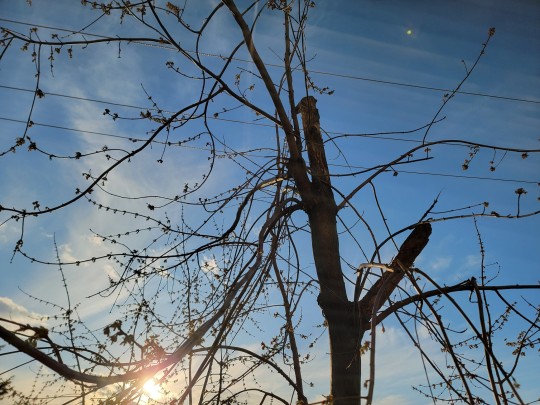
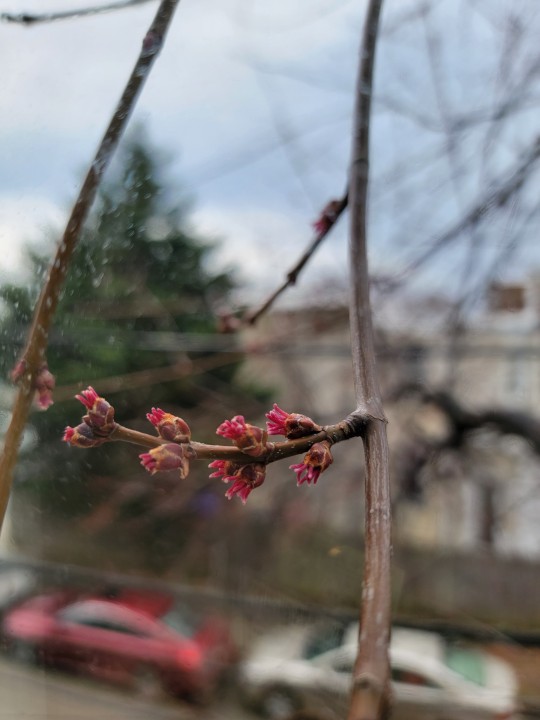
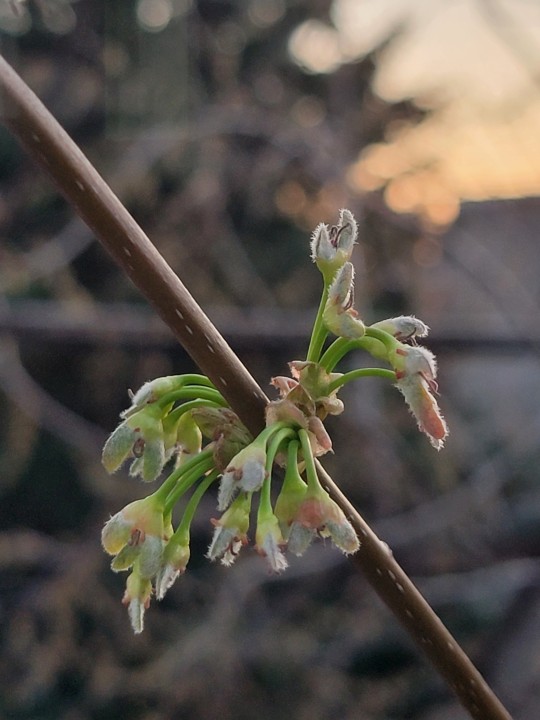

Acer saccharinum - Silver Maple
Today's plant profile is on a controversial favorite of mine, the silver maple.
This tree is reviled or loved depending on who you talk to, although it is naturally found in riparian and wetland zones the silver maple can thrive in dry, polluted, and urban environments; therefore it is extremely adaptable to a wide variety of soil conditions. Maples are usually thought of as a secondary growth forest species able to survive under shade, however silvers like a little more sunlight and are often found on forest edges.
You can identify a silver maple by its broken looking shaggy bark which is smooth silver brown when young. Most identifiable are the leaves which are symmetrical with 5-7 lobes and slightly toothed and fairly large (image 4-courtesy of inaturalist). In spring, red buds turn to young red flowers around march (image 2). Soon they turn into hairy green-silver developing fruit (image 3) which usually end up being a reddish-light green samara (the helicopter seedling) that are enjoyed by birds and squirrels. Usually the tree produces a lot, expect a lot of seedlings in sunny wet areas. All of those images are taken outside of my apartment window. I must note that occasionally silver maples retain seedlings during winter, this is another way to identify them (its not universal for some reason, haven't seen writting on this).
Given the harsh conditions of which it can survive its no surprise that the tree often grows into twisted, easily broken, messy forms. Branches often break off in storms and it's common for parts of trunks to die off and sprout again. In addition to that, urban dwellers hate the surface exploratory nature of its root system which kicks up sidewalk.

Personally I find this vigorous nature appealing as, if I may be quite blunt, this tree is indestructible. I've seen this tree survive 4 feet of rushing water (below) and an ash trunk fall ontop of it (above), this is no quitter. You may also notice in my images the silver maples are growing in a thicket of bamboo...they can be competitive against more aggressive invasives. This makes them great for restoration projects, given our higher frequency of heavy precipitation events due to accelerated global warming, they can survive instability.


This species is extremely common and native to the entirety of eastern North America above the Florida panhandle. It has been planted as a street tree all over the world, sometimes hybridized with other maples (typically acer rubrum).
Ethnobotanically, like many eastern wetland species, silver maple is seen as a medicinal plant by multiple indigenous tribes (given its range this includes numerous of groups). Some research discusses hot water infusions of bark as a treatment for common stomach ailments (sometimes as a tea as well). I only have experience with its sugary sap, nearly all maples have sweet sap which can be transformed into syrup, this isn't as good as sugar maple sap but it is possible. Additionally, silver maple is an excellent tree for pollarding, indigenous groups and settlers alike use the prolific branch growth for basket making.
In terms of propagating silver maples, I have never has anyone ask me to, seedlings will take off on any wet site. I believe you can also propagate branch cuttings from new growth taken during mid-summer months, I haven't personally tried this yet.
So that was the story of Silver Maple, look out for its unique leaves and keep in mind that even the ugliest trees can surprise us.
#acer saccharinum#silver maple#plant profiles#native plants of northeastern america#United states flora
8 notes
·
View notes
Text
Mugwort
Artemisia Vulgaris
Known as: Artemis herb, artemisia, artemisia herb, cingulum sancti johannis, felon herb, muggons, naughty man, old man, old uncle Henry, sailor's tobacco & St.John plant
Related plants: A member of the daisy family Asteraceae that consists of over 32,000 known species of flowering plants in over 1,900 genera within it such as chamomile, coneflowers, dahlia, daisy, dandelion, goldenrod, lettuce, marigold & sunflower
Parts used: Leaves & flowers
Habitat & cultivation: Common mugwort is native to Europe and Eastern Asia. Mugwort was brought into North America as early as the 1600’s for medicinal purposes. It spread throughout the Northeastern U.S. as a contaminant on ships and nurseries.
Plant type: Perennial
Region: 3-8
Harvest: The flowering tops of mugwort should be collected once they bloom or right before the blooms open. The leaves of mugwort plants should be collected before the plant flowers. Older leaves & flowers are significantly more bitter
Planting tips: Mugwort seeds can benefit from a special 1 to 2 week treatment called cold moist stratification prior to planting them & need cold weather to break down germination inhibitors. The seeds require light to germinate, so be careful not to cover them when planting. Mugwort does not like to be overwatered & is very drought tolerant. It is also an invasive weed & best kept in a container.
Medicinal information: Historically mugwort has been used in traditional systems of medicine in different parts of the world. Today, mugwort taken orally is promoted for digestive problems, irregular menstruation, and high blood pressure. It is also promoted as a sedative, laxative, anti-inflammatory & liver tonic. Mugwort lotion applied topically can aid in itching caused by hypertrophic scars & When being smoked, it exhibits mild intoxicating properties & strong relaxing properties.
Cautions: Mugwort should not be taken by pregnant people because it may start menstruation and cause the uterus to contract. Little is known about whether it’s safe to use mugwort while chestfeeding. Mugwort might cause an allergic reaction in people with pollen sensitivities
Magickal Properties
Gender: Feminine
Planet: Venus & Neptune
Element: Earth
Deities: Aida Wedo, Artemis, Diana, Isis, Lakshimi & St.John
Magickal uses:
•Place under your pillow to bringing peaceful sleep, prophetic dreams & aid in astral travel
• Add to incense for cleansing and clearing energy
• Place around scrying tools to increase their energy
• Add to herbal smoke blends to stimulate lucid dreaming, astral travel & visualization
• Make an infusion of mugwort to wash magic mirrors and crystal balls to aid in physic workings
• Burn with Sandalwood or wormwood for scrying rituals
• Carry in a satchets for protection and increasing lust, fertility & preventing back pain
• Throw mugwort in a fire during Midsummer for protection for the following year
• Keep under your doorstep to keep annoying visitors away
• Use in tea before bed to encourage lucid dreaming
• Hang mugwort over or on a door to keep unwelcome energies from passing through
• During a storm or when your life feels threatened by impending dangers, toss into your hearth fire or cauldron to keep you safe
•Wash your hands with a mugwort infusion to increase energy flow before tarot or pendulum readings
Sources:
Farmersalmanac.com
The Herbal Alchemist Handbook by Karen Harrison
The Book of Flower Spells by Cheralyn Darcey
Llewellyn's Complete Book of Correspondences by Sandra Kines
A Witch's Book of Correspondences by Viktorija Briggs
The Encyclopedia of Natural Magic by John Michael Greer
Wild Witchcraft by Rebecca Beyer
Plant Witchery by Juliet Diaz
A Compendium of Herbal Magick by Paul Beyerl
Wikipedia
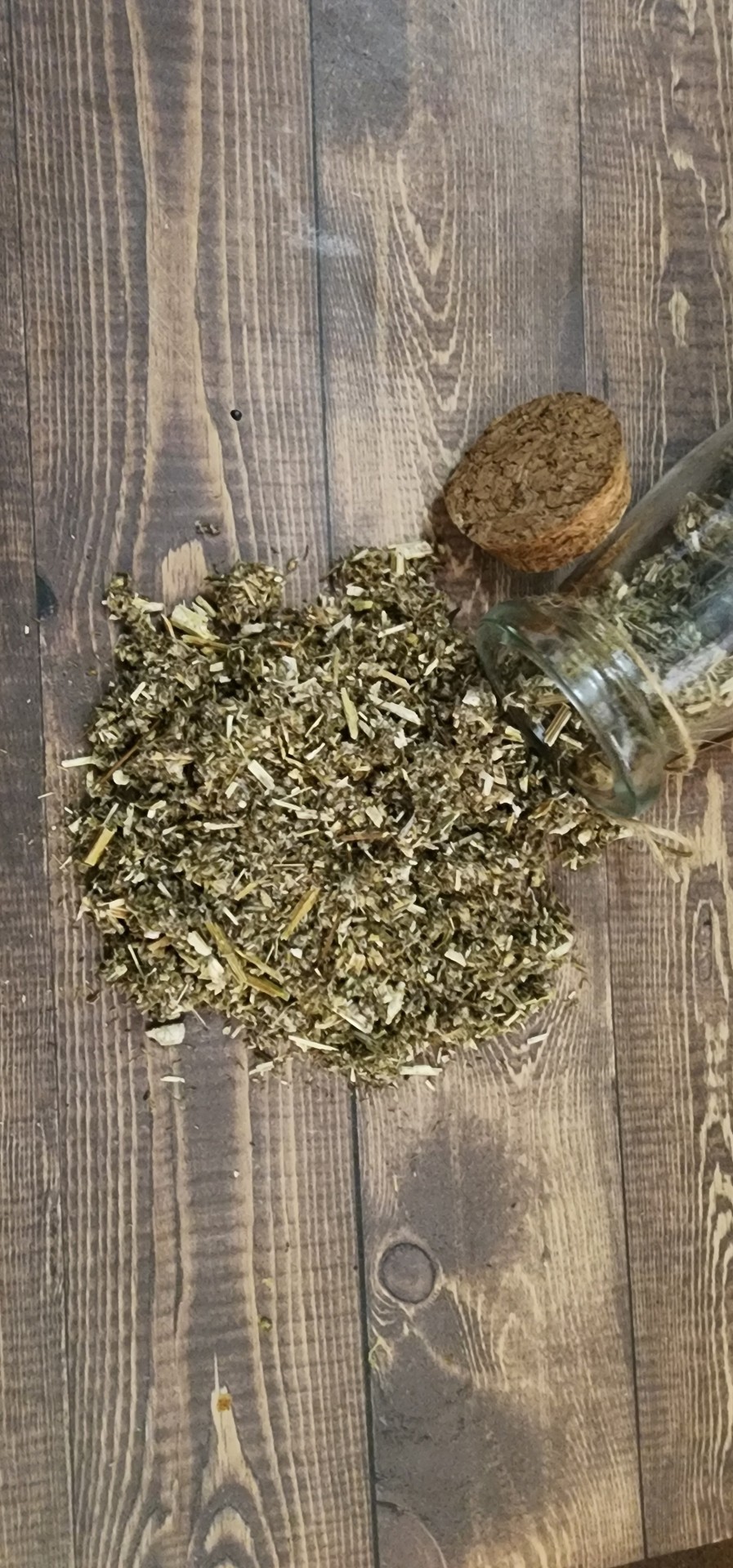
#correspondence#witch guide#mugwort#witchblr#wiccablr#paganblr#spiritual#witch community#witchcraft#witches of tumblr#tumblr witches#tumblr witch community#grimoire#book of shadows#spellbook#spells#spellwork#witch tips#baby witch#beginner witch#witch tumblr#green witchery#green witch#magical herbs#traditional witchcraft#witch#witchcore#baby witch tips#spell casting#GreenWitchcrafts
338 notes
·
View notes
Photo



Solidago canadensis (Canada goldenrod) and Bombus (bumblebee)
Canada goldenrod is native to the northeastern and north-central North America and is considered an invasive weed out here on the West Coast. It is also considered invasive in China, Japan, most of Europe (including all of the Russian Federation), Australia, New Zealand and parts of Africa.
Like many other invasive plants, Canada goldenrod follows typical strategies. For example, it spreads by rhizomes (underground roots) forming dense monocultures that crowd-out native plants. This plant also produces allelopathic chemicals in the soil which inhibit the growth of other species. Each individual plant can live up to a hundred years and it can produce up to 13,000 seeds per year. The seeds can remain viable down to -26 degrees Fahrenheit. If any of your native plants share these characteristics (no matter where you live in the world) then, chances are, it’s considered invasive in somebody else's back yard.
In nature, Canada goldenrod is a bit of a disaster tourist. It thrives in recently disturbed ground, such as after forest fires. In natural conditions, it is gradually replaced by trees and shrubs over time Of course, farmers’ fields are plowed once a year, thus providing a perfect environment. The only good news in this story is that cattle eat it, and it is considered a reasonably good forage crop.
#flowers#photographers on tumblr#Canada goldenrod#bumblebee#spot the bee#fleurs#flores#fiori#blumen#bloemen#Vancouver
94 notes
·
View notes
Text
Parts of Nevada are being overrun by an explosion of flightless, ground-dwelling cannibalistic insects creating nightmares of Biblical proportions.
Business and residents said they are battling millions of Mormon crickets that descended on the state this week in an effort save land and morale.
In Elko, a city in northeastern Nevada south of the Idaho border, crickets converged Monday, covering roads, vegetation, and even local hospital walls, multiple media outlets are reporting.
“Just to get patients into the hospital we had people out there with leaf blowers, with brooms, at one point we even had a tractor with a snowplow on it just to push the piles of crickets and move them on their way,” Steve Burrows, director of community relations at Northeastern Nevada Regional Hospital, told local KSL TV.
Native to western North America, the crickets' populations are cyclic over many years and some residents in the mini-metropolis of just over 20,000 people, are not pleased with their return.
“They’re just gross,” Precious Drake of Elko, told the outlet. “They look like spiders, and they poop everywhere.”
What do Mormon Crickets eat?
According to the University of Nevada in Reno, Mormon crickets can grow larger than two inches and are found in rangelands west of the Missouri River and across all of Nevada. They eat perennials, grass, shrubs and crops, subsequently reducing feed for grazing wildlife and livestock.
Mormon crickets are also cannibalistic and, if their bellies are not full, will eat one another dead or alive.
The insects are not true crickets but are "shield-backed, short-winged katydids that resemble fat grasshoppers that cannot fly," according to the university. Adult Mormon crickets have long antennae and a shiny exoskeleton in a wide array of colors and patterns.
In mass quantities, their feeding contributes to soil erosion, poor water quality, nutrient depleted soils and other land damage.
Mormon crickets prefer drought conditions and can cause "substantial economic losses to rangeland, cropland, and home gardens," according to the university. "This is particularly true as adults and nymphs of Mormon crickets migrate in a band, eating plants along their paths."
The Nevada Department of Agriculture did not immediately respond to USA TODAY Friday morning to say how many counties reported an infestation.
Buggers' name stems from Utah
Last June, farmers and government officials across Nevada northeast to Montana battled the insects as they destroyed crops.
The insect's name dates back to the 1800s, when the bugs ruined the fields of Mormon settlers in Utah. But amidst drought and warming temperatures – conditions favored by the insects – outbreaks across the West have worsened.
According to Utah State University, an infestation is when there are at least eight crickets per square yard of land.
Because Utah's spring has been cool and wet, only "a few small infestations" have been reported so far this year, according to Utah Public Radio.
'Greasy with the squashed entrails'
In 2017, Arlington, Oregon, saw its largest Mormon cricket outbreak since the 1940s. The roads were "greasy with the squashed entrails of the huge insects," which damaged nearby wheat crops, the Associated Press reported.
Skye Krebs, a local rancher there, called outbreak "truly biblical."
"On the highways, once you get them killed, then the rest of them come," Krebs said.
Farmers who experience infestation issues are encouraged to call the their state's respective Department of Agriculture.
#nunyas news#they changed the name of the asian carp#because of fee fees#wonder if they'll do this too
11 notes
·
View notes
Text

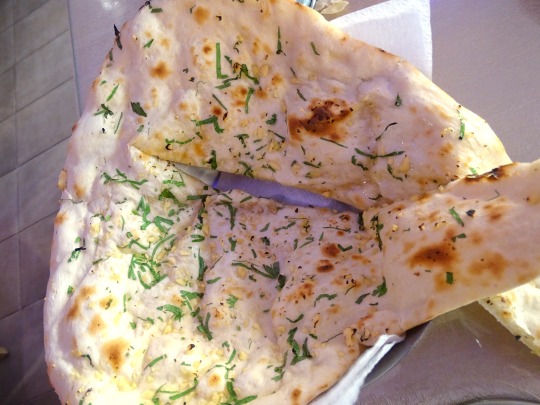
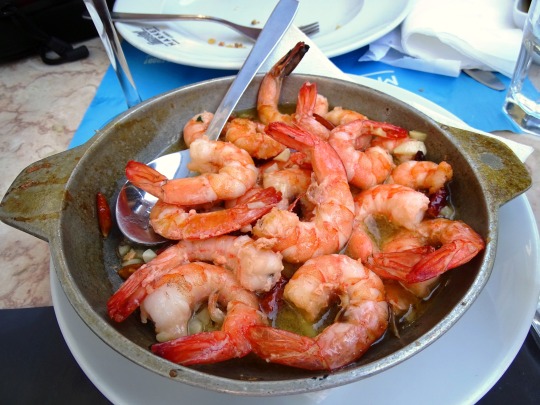



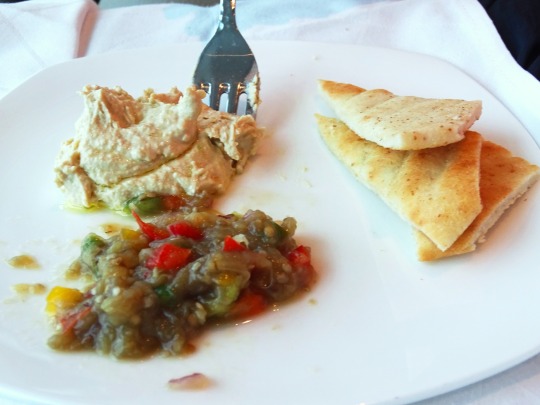


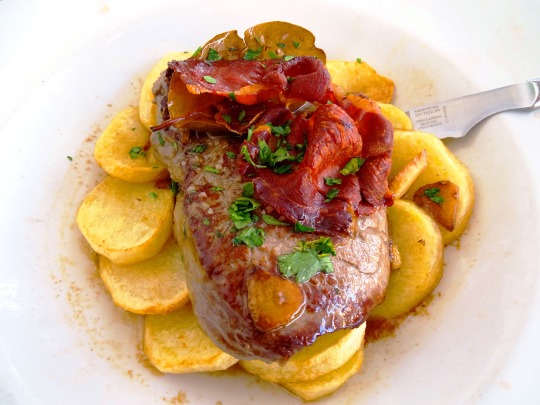



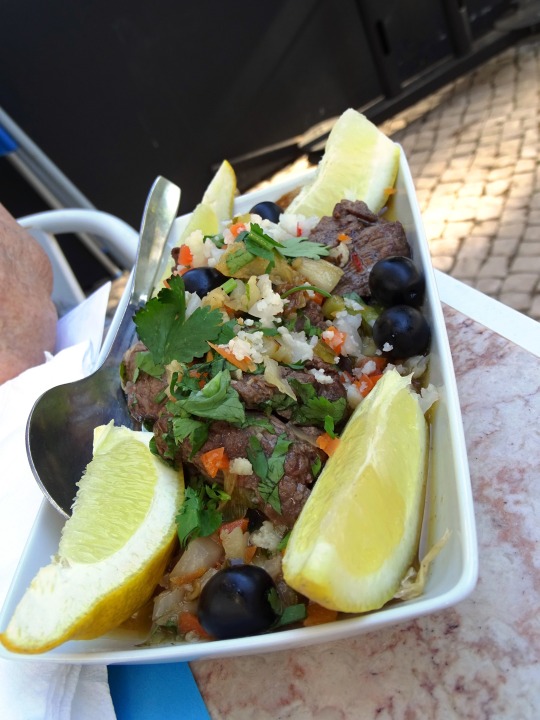
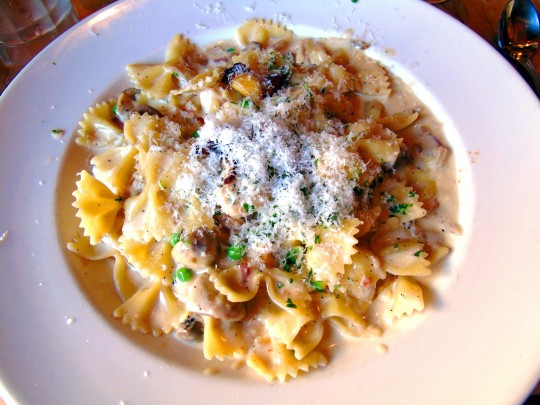

Garlic Lovers Day
Garlic Lovers Day is dedicated to lovers of garlic. Garlic is an onionlike plant that is highly aromatic and has a distinct flavor. It is native to Central Asia and Northeastern Iran, and has long been used as a seasoning and for medicine in Asia, Africa, and in Europe around the Mediterranean Sea. It was used in ancient China, Rome, and Greece, and in the Americas wild garlic was eaten before Europeans arrived. In the United States it was only popular near the Gulf of Mexico and in ethnic neighborhoods in large cities, until the mid-20th century, when its popularity spread.
Garlic is used on breads, and infused in oils that season vegetables, meats, and pastas. It is also used in making things such as bruschetta and pesto. It was used to treat gangrene during World War I and II, and studies have been done to see how it affects cardiovascular health, cancer, and the common cold, but results have been inconclusive. Most garlic is grown overseas, and 90% of the domestic crop is grown in California. There are many types of garlic, most of which are varieties of hardneck or softneck garlic.
How to Observe Garlic Lovers Day
Celebrate the day by making a recipe that includes garlic, or picking up a garlic cookbook. You could also make some garlic infused olive oil. In many areas this is also a good time of year to plant garlic, as it should be done before the fall frost.
Source
#garlic and herb naan#Garlic Fries#Deep Fried Garlic and Beef#food#USA#Spain#restaurant#Farfalle with Chicken and Roasted Garlic#chicken breast#garlic potatoes#Germany#Steakpfanne#garlic bread#Garlic Shrimps#National Garlic Day#NationalGarlicDay#6 October#Portugal#Beef a Casa#Filet Port#original photography#travel#vacation#Caesar Salad#Hummus#pita#Baba Ganoush#pulled pork#BBQ
2 notes
·
View notes
Text
nerd time!! spidersona research!!!
if you see something that is incorrect please let me know!!!!
Yellow Sac Spider/Cheiracanthium
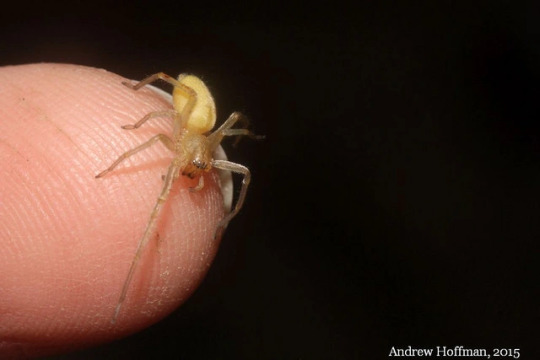


Bite: Creates surface lesion with redness, swelling, burning. Medical attention recommended. Venom is slightly necrotic to humans
Behavior: Bites without reason, hunter (actively chases prey), cannibalistic, most common spider bites. Nocturnal. Do not jump, fast moving, escapes with silk when startled.
Habitat: Gardens, bushes, trees, during cold weather may seek shelter in houses. Northeastern United States, range expanded in recent decades, central Europe.
Size: Females body size range 5-9mm, males 4-8mm. Leg span 2.5cm/1in. Front pair of legs are longest. Males have more slender bodies.
Coloration: Light yellow body, brown jaws, darker legs, vertical dorsal stripes on abdomen. Males are darker. Diet can affect coloration
Body: Scopulae allows them to cling to smooth surfaces like glass, 8 eyes
References: Nebraska University dep of entomology, Wikipedia, WebMD,
Note: I lost some of my references for this entry - take with a grain of salt
Yellow Amycine Jumping Spider
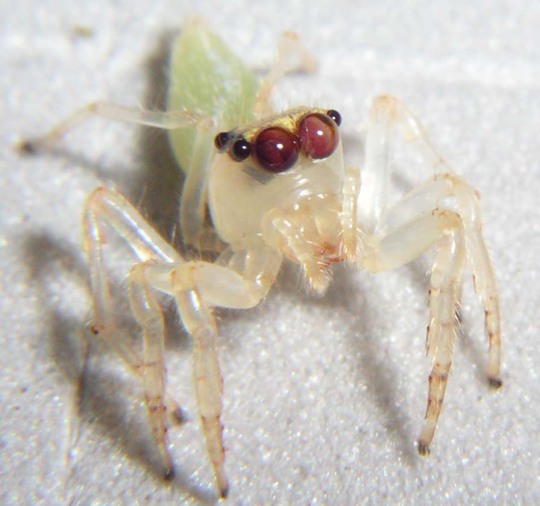


Note: I will be refrenceing Amycine when I can but not much is known about the species
Bite: Unlikely to bite humans, usually runs away. Causes redness, itching, stinging, and swelling. Can be cleaned with soap and water, does not require medical attention
Behavior: Can move rapidly sideways and backwards, pounce on prey. Can jump 20-50 times their body length, use silk dragline when jumping as safety line. Jumping is caused by sudden blood flow change, fully extending legs. Eats insects and other spiders, may drink nectar and plant matter. Hunts during the day.
Habitat: Vegetation, rocky areas, very widespread - no specific habitat. Not found in Greenland
Size: 3.175mm/0.75in, have larger front legs
Coloration: Extremely translucent, eye cones are visible. Joints are dark due to blood flow.
Eyes: Has two eyes on the front, two on each side, and two on the back of their head
References: Wikipedia, US Dept. of Agriculture, Washington State, PestWorld.Org, Michigan State
Striped Lynx Spider



Bite: Little danger to humans, only cause temporary pain and swelling.
Temperament: Daytime ambush predator, nimble. Can shoot venom 20cm/7.9in, only observed in adult females. Strong sense of smell to detect prey. Consuming nectar early in life can deter cannibalism and lengthen lifespan somewhat. Jumps and uses dragline like jumping spiders, is not classified as one.
Habitat: Native coast to coast of southern United States, Mexico, Central America, and the Caribbean. Lives at the top of vegetation in open areas like fields and backyards. Most well seen in Florida and American South.
Size: Females 5.7-6.7mm, males 4-4.5mm and more slender. Fangs are large in proportion to head
Coloration: Pale yellow, can adjust coloration. Males resemble females, but are iridescent that can appear coppery, silvery-green, or purple. Males are usually more red/orange
References: North American Insects & Spiders, University Florida, University Florida, University Florida, iNaturalist
Other spiders I want to look at later: Heliophanus flavipes, Telamonia dimidiata, Crab spiders, Misumena vatia, orchard orbweaver
Note: Always do your own research!!! Doubt the information I gave you!!!
#spiders#spidersona#refrence#Entomology#spider tw#true spiders#Cheiracanthium inclusum#Salticidae#jumping spider#Oxyopes salticus#Striped Lynx Spider#yellow sac spider
4 notes
·
View notes
Text

The Hopi are a Native American tribe who primarily live on the Hopi Reservation in northeastern Arizona, United States. As of the 2010 census, there are 19,338 Hopi in the country.[1] The Hopi Tribe is a sovereign nation within the United States and has government-to-government relations with the United States federal government. Particular villages retain autonomy under the Hopi Constitution and Bylaws. The Hopi language is one of 30 in the Uto-Aztecan language family. The majority of Hopi people are enrolled in the Hopi Tribe of Arizona but some are enrolled in the Colorado River Indian Tribes. The Hopi Reservation covers a land area of 2,531.773 sq mi (6,557.26 km2The Hopi people trace their history in Arizona to more than 2,000 years, but their history as a people goes back many more thousands of years. According to their legends, the Hopi migrated north to Arizona from the south, up from what is now South America, Central America and Mexico ... The tribe’s teachings relate stories of a great flood and other events dating to ancient times, marking the Hopi as one of the oldest living cultures in documented history. A deeply religious people, they live by the ethic of peace and goodwill ... The Hopi Reservation, in northeastern Arizona, occupies part of Navajo and Coconino counties and encompasses approximately 1,542,306 acres. Having inhabited this high and dry area since the 12th century, the Hopi have developed a unique agriculture practice, “dry farming.” Instead of plowing their fields, Hopi traditional farmers place “wind breakers” in the fields at selected intervals to retain soil, snow and moisture ... They also have perfected special techniques to plant seeds in arid fields. As a result, they succeed in raising corn, beans, squash, melons and other crops in a landscape that appears inhospitable to farming ... Throughout the Hopi reservation, every village is an autonomous government. However the Hopi Tribal Council makes law for the tribe and sets policy to oversee tribal business ...
14 notes
·
View notes
Text
Comptonia peregrina Sweet Fern

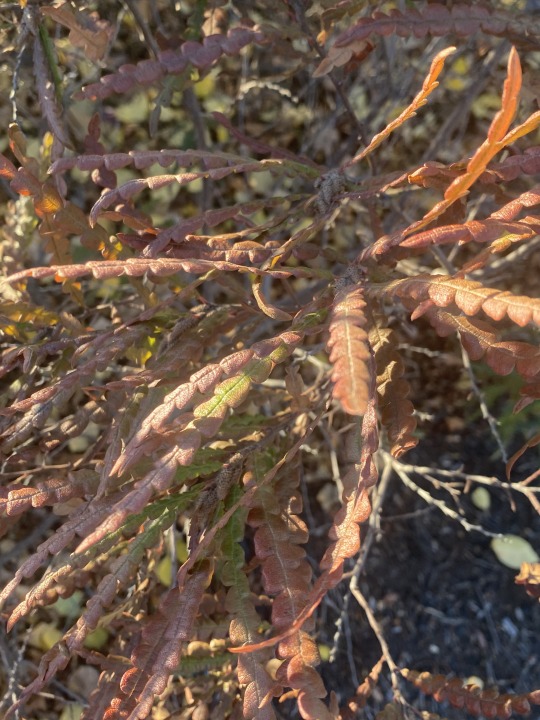

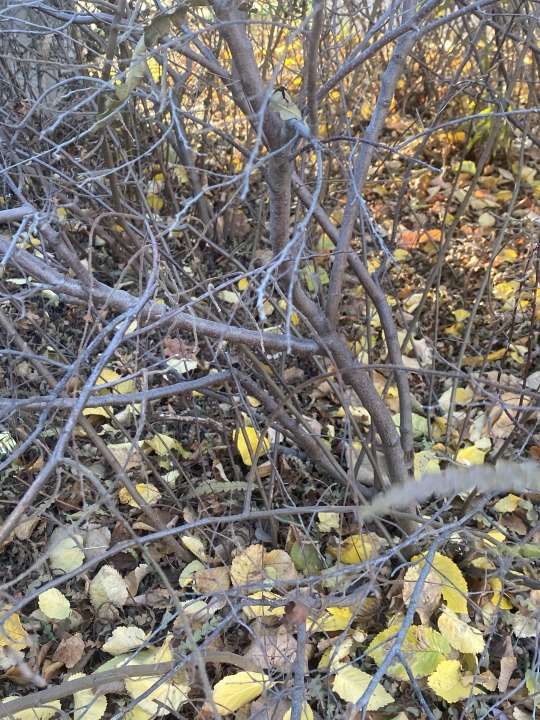
This plant was photographed on Northeastern University's arboretum near Carter Field. This plant has signs of color change and loss of leaves.
Basic Facts
Comptonia peregrina, native to Eastern North America, has cold hardiness zones from 2 to 6. It is a shrub that can grow 2 to 5 feet in height and 4 to 8 feet in spread. The plant prefers full sun to part shade, medium water, and well drained soil. However, this plant can tolerate wet conditions. This plant can also occur in poor, unfertile soil along roadsides. The leaves are normally olive to dark green.
Design
Although I would not recommend using this plant for gardens, it is an amazing plant for waste areas and roads. Once they are planted, they tend to spread and is very hard to control. However if considering stabilizing slopes or adding a plant to an area with poor soils, this shrub is a great one to consider.
Bird Attraction
The flowers that are produced by Comptonia peregrina are small and yellow. However, they give way to bur-like nutlets. These nutlets are what causes this plant to be an attraction to bird. If used in naturalized areas, it is a great way to add and consider biodiversity of that community.
Sources
https://www.missouribotanicalgarden.org/PlantFinder/PlantFinderDetails.aspx?kempercode=c240
https://www.wildflower.org/plants/result.php?id_plant=cope80
0 notes
Text
Blue Moscow Delta Guppies & Top 6 Facts
Blue Moscow: An Introduction Delta Guppy in General Blue Moscow Delta Guppies are a popular breed of guppies known for their stunning blue color, distinctive body shape, and graceful fins.
Aquarium enthusiasts adore them because they are both beautiful and elegant. In this essay, we'll discuss where Blue Moscow Delta Guppies come from, what they eat, how they breed, common health problems, special care instructions, and any laws that may make owning or breeding this breed illegal in some areas.
Details about the entire situation
Origin:
The Blue Moscow Delta Guppy is a variant of the common guppy (Poecilia reticulata) that has been selectively bred. There isn't much information about the origins of this breed, but guppies are native to the northeastern part of South America, including Venezuela, Guyana, and Brazil. Because of how carefully it has been bred, the Blue Moscow Delta Guppy has a distinct color and finnage.
Size:
Blue Moscow Delta Guppies average 1.5 to 2.5 inches (3.8 to 6.4 cm) in length. Most of the time, males are slightly smaller than females.
Lifespan:
Blue Moscow Delta Guppies can live for 2 to 3 years if properly cared for and kept in the best conditions. However, it's important to remember that everyone's lifespan varies depending on factors such as genes, water quality, diet, and overall care.
Temperament:
Blue Moscow Delta Guppies are generally peaceful fish that do not bother other fish. They are social fish that get along with other peaceful community fish species. When designing a community aquarium, consider the personalities and compatibility of the fish.
Appearance:
Blue Moscow Delta Guppies are distinguished by their bright blue color and distinctive fins. They have streamlined bodies that appear to be long and triangle-shaped. Males are bright blue all over, while females are typically a lighter blue or silver color. Both males and females have elegant, flowing, delta-shaped tails that add to their overall beauty.
There are various shades and intensities of blue, and some people have darker and more vivid blues than others. It's important to understand that the color of Blue Moscow Delta Guppies can be influenced by factors such as their genes, diet, and environmental conditions
habitat and tank requirements
Natural Environment:
Delta Blue Moscow Guppies and other guppy fish are native to freshwater habitats in South America's northeast. They live in streams, rivers, and shallow pools that are densely forested. Guppies live in the wild in areas with slow-moving water and plenty of hiding places, such as among plants or under water roots.
Tank Dimensions:
Blue Moscow Delta Guppies should be kept in an aquarium with a minimum capacity of 10 gallons (38 litres). This size allows the fish to swim freely while still leaving room for decorations and plants.
Water measurements:
Blue Moscow Delta Guppies thrive in well-kept aquariums with the proper water parameters. This breed thrives in water temperatures ranging from 72°F to 82°F (22°C to 28°C). The pH level should be kept between 6.8 and 7.8, indicating that it is slightly acidic to neutral. It is critical to maintain high water quality by monitoring ammonia, nitrite, and nitrate levels on a regular basis.
Tank Configuration:
To make the tank look like the Blue Moscow Delta Guppies' natural habitat and make the fish feel at ease, live or fake plants should be added. These plants have multiple applications. They provide hiding places, enhance the natural appearance of the area, and help keep the water clean by removing nitrates. Dense plants, such as Java moss or Amazon sword plants, can be added to provide a safe haven for the fish.
A sandy or fine-grained substrate is beneficial to the tank because it allows the guppies to do what they do best: hunt for food. You can also add driftwood, rocks, and other decorations to improve the appearance of the aquarium and provide more hiding places for the fish.
Feeding
Diet:
Moscou Delta Blue Guppies eat everything, so they require a diverse diet to get all of the nutrients they require. A guppie's main food should be a high-quality flake or pellet food designed specifically for them. These foods frequently contain a good mix of proteins, vitamins, and minerals that are beneficial to the fish's overall health.
In addition to dry foods, live or frozen foods should be included in their diets. Brine shrimp, daphnia, bloodworms, and other small animals without backbones are examples of this. These live or frozen foods provide Blue Moscow Delta Guppies with natural nutrients and aid in the development of their color.
What they eat:
Blue Moscow Delta Guppies are typically active and voracious eaters. They should be fed small amounts several times a day to ensure they get enough food. Overfeeding should be avoided because it can harm the fish's health and contaminate the aquarium's water. It's critical to monitor how the fish eat and adjust the amount of food accordingly.
Breeding
Reproduction:
Moscou Delta Blue Guppies, like other guppies, carry life. This implies that females do not lay eggs. Instead, they produce live fry. During mating, the gonopodium on the male's anal fin is used to move sperm from the male to the female.
How to Become Pregnant:
Blue Moscow Delta Guppies require specific conditions and considerations in order to reproduce. It is best to keep a separate breeding tank or provide plenty of hiding places for pregnant females in the main aquarium so they can give birth and protect their fry from being eaten. To encourage breeding, keep the water temperature between 78°F and 80°F (25°C and 27°C).
Babies are born in the following ways:
The male begins the breeding process by displaying his bright colors and fins in order to attract the female's attention. They mate if the female is fertile, and she stores the male's sperm so it can be used to make eggs. The female fish gives birth to live fry after about 4 to 6 weeks of pregnancy.
To prevent the fry from dying, provide them with hiding places or a breeding trap in the tank. This allows the fry to get away from the adults, reducing their chances of being eaten. To help the fry grow and develop, a special diet for young fish, such as crushed flakes or powdered fry food, can be given to them.
Most Common Health Issues
Even though Blue Moscow Delta Guppies are typically hardy fish, they can become ill from common causes. These are the items:
Fin rot is a bacterial infection that can occur when the water quality is poor or the fish is stressed. Fins begin to fray or fall apart as a result of this. Fin rot can be avoided by keeping the water clean and preventing the fish from becoming overly stressed.
Ich (Ichthyophthirius multifiliis) is a common parasitic infection that causes white spots on the fish's body and fins. It is treatable with over-the-counter medications designed to kill the parasites that cause ich. Ick can be prevented from spreading by placing new fish in a quarantine tank for a period of time and keeping a close eye on the aquarium.
Dropsy is not a disease in and of itself, but rather a symptom of something more serious. Bloating, swelling, and skin scales that stick up are symptoms. Dropsy can be caused by bacterial infections or malfunctioning organs within the body. To treat dropsy, it is critical to identify and treat the underlying cause as soon as possible, while also maintaining optimal water quality.
Steps to take to put a stop to it:
Blue Moscow Delta Guppies require the best possible care and maintenance to avoid common health issues. These are some examples:
Maintaining high water quality by testing and monitoring water parameters on a regular basis, performing partial water changes, and utilizing a good filtration system.
To prevent disease transmission, new fish are kept in a separate tank before being introduced into the main aquarium.
To prevent obesity and the associated health problems, avoid overfeeding and provide a balanced diet to your pet.
Avoid putting too many fish in the tank because this can cause stress and make the fish sick.
Keeping an eye on the fish for signs of illness or unusual behavior, and acting quickly if any problems are discovered.
Consider the following:
Compatibility:
Blue Moscow Delta Guppies are mostly peaceful and can coexist with other peaceful community fish. However, it is critical to consider the personality, size, and needs of any potential tankmates. Keep them away from aggressive fish or fish that like to bite their fins, as this can stress them out and harm their fins.
Extra Care Instructions:
Even though Blue Moscow Delta Guppies do not require any additional care beyond that of other guppies, there are a few things to keep in mind:
Give them a balanced diet and don't overfeed them to avoid obesity and the associated health problems.
Maintain optimal water quality by testing and monitoring water parameters on a regular basis and changing the water frequently.
Keep an eye on the fish's health and behavior to detect early signs of illness or stress.
Allow pregnant women to hide and separate breeding areas so they can give birth and protect their children.
Limitations imposed by the law:
It is critical to determine whether owning or breeding Blue Moscow Delta Guppies is illegal in your area and to abide by the rules. Some places may have rules governing who can own or trade specific fish species, as well as how they can be owned or traded.
Finally, Blue Moscow Delta Guppies are stunning blue fish with graceful fins and serene personalities. These fish can do well and add a touch of class to any aquarium with the proper care and attention to their needs for a home, how they eat, and how they breed. Aquarists can enjoy the beauty and charm of Blue Moscow Delta Guppies for many years if they know what they need and take precautions to keep them healthy.
0 notes
Text

Elderberry in the Haze - June 7th 2023
#nature#forest#original phography#photographers on tumblr#lensblr#elderberry#new jersey#wildfire smoke#orange hue#native plants of northeastern america
30 notes
·
View notes
Text
Blue Moscow Delta Guppies & Top 6 Facts
Blue Moscow's beginning Delta Guppy in General Blue Moscow Delta Guppies are a popular breed of guppies that are known for their beautiful blue color, unique body shape, and graceful fins.
People who like aquariums like them a lot because they are beautiful and classy. In this essay, we'll talk about different things about Blue Moscow Delta Guppies, such as where they come from, what they eat, how they breed, common health problems, special care instructions, and any laws that might make it illegal to own or breed this breed in some places.
Details about everything
Where it came from:
The Blue Moscow Delta Guppy is a type of common guppy (Poecilia reticulata) that has been bred in a certain way. There isn't much known about where this breed came from, but guppies are native to the northeastern part of South America, in places like Venezuela, Guyana, and Brazil. Because of how carefully it has been raised, the Blue Moscow Delta Guppy has a unique color and finnage.
Size:
The average length of a Blue Moscow Delta Guppie is between 1.5 and 2.5 inches (3.8 and 6.4 cm). The males are usually a little bit smaller than the females.
How long:
If they are well cared for and live in the best conditions, Blue Moscow Delta Guppies can live for about 2 to 3 years. But it's important to remember that everyone's lifespan can be different, depending on things like their genes, the quality of their water, their diet, and how well they are cared for in general.
How people act:
Most of the time, Blue Moscow Delta Guppies are quiet fish that don't bother other fish. They live in groups with other peaceful species of community fish and get along with them. When setting up a community aquarium, it's important to think about how the fish will get along with each other.
How it looks:
Blue The city of Moscow Delta Guppies are known for their bright blue color and unique fins. They have slim bodies that look a little bit like triangles. The males are all bright blue, while the females are usually a lighter blue or silver color. Both males and females have beautiful, flowing tails that are shaped like a delta.
There are many different shades and intensities of blue, and some people have blues that are darker and more vivid than others. It's important to know that things like their genes, what they eat, and the conditions in their environment can change the color of Blue Moscow Delta Guppies.
Needs a home and a tank
Habitat in nature:
Delta Blue de Moscou Guppies and other guppy fish are native to freshwater areas in the northeast of South America. They live in rivers, streams, and shallow pools where there are a lot of plants. Guppies live in places with slow-moving water and lots of places to hide, like among plants or under water roots.
Size of Tank:
Blue Moscow Delta Guppies should be kept in an aquarium that can hold at least 10 gallons, which is about 38 liters. This size gives the fish enough room to swim and leaves enough room for decorations and plants.
How to measure water:
Blue Moscow Delta Guppies do well in an aquarium that is kept clean and has the right water parameters. The best water temperature for this breed is between 22°C and 28°C (72°F and 82°F). The pH should stay between 6.8 and 7.8, which is slightly acidic to neutral. Keeping an eye on things like ammonia, nitrite, and nitrate levels on a regular basis is important for keeping the water quality high.
Tank Setting:
Put real or fake plants in the tank to make it look like the Blue Moscow Delta Guppies' natural habitat and make the fish feel at home. There are more than one way to use these plants. They give the fish places to hide, make the area look more natural, and remove nitrates from the water, which helps keep the water clean. You can add dense plants like Java moss or Amazon sword plants so the fish have somewhere to hide and feel safe.
A sand or fine-grained substrate is good for the tank because it lets the guppies do what they do best, which is hunt for food. You can also decorate the aquarium with rocks, driftwood, and other things to make it look nicer and give the fish more places to hide.
Putting food in
Diet:
Delta Blue from Paris Guppies eat everything, so they need a variety of foods to get all the nutrients they need. A high-quality flake or pellet food made just for guppies should be their main food. These foods usually have a good mix of proteins, vitamins, and minerals that are important for the fish's overall health.
Aside from dry foods, it's good to give them live or frozen foods as well. This can include brine shrimp, daphnia, bloodworms, and other small animals without backbones. Blue Moscow Delta Guppies get the nutrients they need from these live or frozen foods, which also help bring out their color.
How people eat:
Blue Moscow Delta Guppies are usually busy and like to eat. Small amounts of food should be given to them several times a day to make sure they get enough. Overfeeding fish can hurt their health and make the water in the aquarium dirty. It's important to watch how the fish eat and change how much food you give them based on that.
Having babies
Making copies:
Delta Blue from Paris Like all guppies, they have life. This means that the females don't make eggs. Instead, they have babies that are already alive. During mating, the gonopodium on the male's anal fin moves sperm from the male to the female.
How to start a family:
For Blue Moscow Delta Guppies to have babies, they need to be in a certain place and do certain things. It is best to keep a separate breeding tank or to give pregnant females lots of places to hide in the main aquarium so they can give birth and keep their fry from being eaten. To help fish breed, the water should be kept about 25°C to 27°C (78°F to 80°F) warmer.
How a baby is born:
The male starts the process of mating with the female by showing off his bright colors and fins to get her attention. If the female is fertile, they mate, and the female stores the male's sperm so it can be used to make eggs. The female fish gives birth to live fry after being pregnant for about 4 to 6 weeks.
It's best to give the fry places to hide or a breeding trap in the tank so they don't die. This makes it easier for the fry to get away from the adults and less likely that they will be eaten. Fry can grow and develop faster if they eat crushed flakes or powdered fry food, which is made for young fish.
Most Often Seen Health Issues
Blue Moscow Delta Guppies are usually hardy fish, but some common things can make them sick. The following are:
Fin rot is a bacterial infection that can happen when the water is dirty or when the fish is under a lot of stress. It can be seen when the fins start to fray or fall apart. Fin rot can be stopped by making sure the water is clean and the fish isn't under too much stress.
Ich, which is caused by the parasite Ichthyophthirius multifiliis, makes the fish's body and fins covered in white spots. It can be treated with parasite-killing medicines that can be bought over-the-counter. Ick can't spread if new fish are kept in a quarantine tank for a while and the aquarium is often checked on.
Dropsy is not a disease in and of itself, but rather a sign of a bigger problem. It causes swelling, bloating, and scales that stick up on the skin. Dropsy can be caused by things like bacterial infections or organs that aren't working well. To treat dropsy, it's important to find and treat the root cause right away and keep the water quality at its best.
What you can do to stop it:
To stay healthy, Blue Moscow Delta Guppies need the best care and maintenance that can be given. These include:
Keeping the water quality high by testing and watching the parameters of the water on a regular basis, doing partial water changes, and using a good filtration system.
Before going into the main aquarium, new fish are kept in a separate tank to keep diseases from spreading.
Stop your pet from getting fat and the health problems that come with it by not giving it too much food and instead giving it a balanced diet.
Don't put too many fish in the tank, because that can stress them out and make them more likely to get sick.
Keeping a close eye on the fish to look for signs of illness or strange behavior and acting quickly if any problems are found.
Things to consider
Getting along:
Blue Moscow Delta Guppies are usually peaceful fish that can live with other peaceful community fish. But it's important to think about the personality, size, and needs of any possible tankmates. Don't keep them with fish that are aggressive or like to bite their fins, as this can make them stressed out and hurt their fins.
Extra Care Instructions:
Even though Blue Moscow Delta Guppies don't need any special care beyond what other guppies need, there are a few things to remember:
Give them a balanced diet and don't feed them too much to keep them from becoming overweight and getting the health problems that come with it.
Keep the water quality at its best by testing and watching the water parameters often and changing the water often.
Keep an eye on the fish's health and how they act so you can spot early signs of illness or stress.
Give pregnant females places to hide and keep breeding areas separate so they can give birth and protect their young.
Laws with exceptions:
It is important to find out if it is against the law in your area to own or breed Blue Moscow Delta Guppies and to follow those rules. Some places may have rules about who can own or trade certain fish species and how they can be owned or traded.
In conclusion, Blue Moscow Delta Guppies are beautiful blue fish with calm personalities and graceful fins. With the right care and attention to what they need for a home, how they eat, and how they breed, these fish can do well and add a touch of class to any aquarium. Aquarists can enjoy the beauty and charm of Blue Moscow Delta Guppies for a long time if they know what they need and take steps to protect them from common health problems.
0 notes
Text
Emerald Ash Borer: A Threat to Pennsylvania’s Ash Trees
In this third installment of our series on invasive species of insects, we will discuss the emerald ash borer (EAB). This invasive woodboring beetle has wreaked havoc on ash tree populations in Pennsylvania and other states in the United States and other regions in North America. As a homeowner, you should understand the impact of this invasive pest. Below, we discuss the characteristics, life cycle, and damage caused by emerald ash borer in Pennsylvania as well as some prevention and treatment methods.
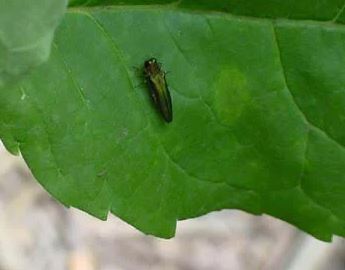
What Is the Emerald Ash Borer?
The emerald ash borer (Agrilus planipennis) is a small, metallic green species of beetle native to northeastern Asia that has become invasive to North America. The beetle was first discovered in the United States in 2002 in Michigan and has since spread to 30 states, including Pennsylvania. EAB attacks and kills ash trees in North America by feeding on their inner bark, disrupting the tree’s ability to transport water and nutrients.
Emerald Ash Borer Appearance
Adult EAB are distinguished by their bright metallic green color and are approximately 1/3 of an inch (8.5 mm) long and about 1/16 of an inch (1.6 mm) wide. Females are also slightly larger than males. The elytra (hard shells that serve as protective cases for wings) are typically a darker green but can also have copper hues. Another distinguishing feature of the adult emerald ash borer species is its bright red upper abdomen that can be seen when the wings and elytra spread.
Larvae are white to cream-colored with 10 abdominal segments. The last segment has a pair of brown, pincer-like appendages. Larvae typically reach a length of 1 to 1¼ inches.
Emerald Ash Borer Life Cycle
The emerald ash borer has a 1-year life cycle. Adult beetles emerge through D-shaped exit holes in a tree around late May and early June—adult activity peaks between mid-June and early July. After appearing, the adult beetles feed on ash foliage for several days and then begin to mate. Females lay approximately 60-90 eggs in their lifespan, which hatch in 7 to 10 days.
After hatching, the larvae tunnel through the bark into the ash tree’s phloem (plant tissue). Larvae feed on phloem for several weeks, creating S-shaped paths in the tree under the bark. As larvae grow, these galleries become progressively wider. Prepupal larvae overwinter in shallow chambers within the bark. Pupation begins in late April or early May and lasts 1 to 2 weeks when this species’ life cycle starts again.
Signs and Symptoms
If you have ash trees on your property, knowing the signs and symptoms of EAB infestation is crucial to keeping them safe and preventing damage. These signs include the following:
Thinning canopy and dieback of branches
D-shaped exit holes in the ash tree bark
S-shaped galleries under the bark
Increased woodpecker activity (as woodpeckers feed on larvae)
Damage from Emerald Ash Borer
As mentioned above, EAB larvae feed on the nutrient-rich inner phloem, cambium, and outer xylem beneath the bark, creating S-shaped galleries packed with sawdust-like frass. As the infestation of this invasive species progresses, the symptoms mentioned above become more apparent. Trees will die after 3 to 4 years of heavy infestation, making EAB control tactics crucial to preserving ash tree populations.
Preventing Emerald Ash Borer Infestation
Prevention is the best way to avoid damage, and there are several steps you can take to protect your ash trees from EAB:
Do not move firewood: Moving firewood can inadvertently transport EAB to new locations. Some states, including Pennsylvania, have restrictions on moving firewood because of invasive insect species. Always buy firewood locally and burn on-site.
Use insecticides: Preventive insecticides containing certain ingredients and agents can be applied to healthy ash trees to protect them from EAB. Consult a certified arborist for advice on the appropriate insecticides and application methods.
Plant diverse tree species: Planting a variety of tree species can help reduce the impact of EAB on your property and promote a healthier ecosystem.
Damage from Emerald Ash Borer
As mentioned above, EAB larvae feed on the nutrient-rich inner phloem, cambium, and outer xylem beneath the bark, creating S-shaped galleries packed with sawdust-like frass. As the infestation of this invasive species progresses, the symptoms mentioned above become more apparent. Trees will die after 3 to 4 years of heavy infestation, making EAB control tactics crucial to preserving ash tree populations.
Treating EAB Infestation
If your ash trees are already infested with EAB, Burkholder PHC offers various treatment options, including:
Insecticide: Treatments can be applied to infested trees to kill EAB larvae and prevent further damage. Some application options include soil drenches, soil injections, or stem injections.
Tree Removal: In some cases, infested trees may need to be removed to prevent the spread of EAB to nearby healthy trees.
Replacement Planting: After removing infested trees, consider planting a diverse selection of tree species to help restore the ecosystem.
Contact Burkholder PHC for Emerald Ash Borer Treatment in Your Landscape
If you suspect or are concerned about emerald ash borer impacting your property, contact Burkholder PHC for expert advice and treatment options. We provide a free evaluation by our highly experienced, qualified plant health care experts and certified arborists to help remove and control invasive species and the adverse effects these pests cause. Contact Burkholder PHC today for a free consultation or more emerald ash borer information.
Blog is originally published at: https://www.burkholderphc.com/emerald-ash-borer-a-threat-to-pennsylvanias-ash-trees/
It is republished with the permission from the author.
0 notes
Text
Recipe for Aromatic House Warming Cider
Making the perfect Aromatic House Warming Cider should only take approximately 50 min . It’s considered an Easy level recipe. Below are the ingredients and directions for you to easily follow.
There are many different ways to make this Aromatic House Warming Cider recipe. Once you’re familiar with our recommended ingredients and directions, you can add your own twist to this recipe to make it your own! We’ve also listed potential Cookware items below that might be necessary for this Aromatic House Warming Cider recipe.
Aromatic House Warming Cider Popular Ingredients
2 quarts apple cider
2 teaspoons pumpkin pie spice
2 cinnamon sticks
1 (2-inch) piece ginger
1 (12-ounce) bag fresh cranberries or 1 cup dried cranberries
1 orange, zested
Steps for making Aromatic House Warming Cider
Combine all of ingredients in a large pot and bring to a boil over medium heat. Once the mixture is boiling, turn heat down to low and bring to a gentle simmer. The cider will permeate the house with a warm and inviting holiday scent. Add more apple cider as needed when the cider evaporates.
This recipe can also be reduced by half and prepared in a fondue pot so that it can be placed in a room other than the kitchen.
Popular Categories for this Recipe
Apple Recipes
Fruit – In botany, a fruit is the seed-bearing structure in flowering plants that is formed from the ovary after flowering.Fruits are the means by which flowering plants (also known as angiosperms) disseminate their seeds. Edible fruits in particular have long propagated using the movements of humans and animals in a symbiotic relationship that is the means for seed dispersal for the one group and nutrition for the other; in fact, humans and many animals have become dependent on fruits as a source of food. Consequently, fruits account for a substantial fraction of the world’s agricultural output, and some (such as the apple and the pomegranate) have acquired extensive cultural and symbolic meanings.In common language usage, “fruit” normally means the fleshy seed-associated structures (or produce) of plants that typically are sweet or sour and edible in the raw state, such as apples, bananas, grapes, lemons, oranges, and strawberries. In botanical usage, the term “fruit” also includes many structures that are not commonly called “fruits”, such as nuts, bean pods, corn kernels, tomatoes, and wheat grains.
Pumpkin – A pumpkin is a cultivar of winter squash that is round with smooth, slightly ribbed skin, and is most often deep yellow to orange in coloration. The thick shell contains the seeds and pulp. The name is most commonly used for cultivars of Cucurbita pepo, but some cultivars of Cucurbita maxima, C. argyrosperma, and C. moschata with similar appearance are also sometimes called “pumpkins”.Native to North America (northeastern Mexico and the southern United States), pumpkins are one of the oldest domesticated plants, having been used as early as 7,000 to 5,500 BC. Pumpkins are widely grown for commercial use and as food, aesthetics, and recreational purposes. Pumpkin pie, for instance, is a traditional part of Thanksgiving meals in Canada and the United States, and pumpkins are frequently carved as jack-o’-lanterns for decoration around Halloween, although commercially canned pumpkin purée and pumpkin pie fillings are usually made from varieties of winter squash different from the ones used for jack-o’-lanterns. In 2019, China accounted for 37% of the world’s production of pumpkins.
Gluten Free – A gluten-free diet (GFD) is a nutritional plan that strictly excludes gluten, which is a mixture of proteins found in wheat (and all of its species and hybrids, such as spelt, kamut, and triticale), as well as barley, rye, and oats. The inclusion of oats in a gluten-free diet remains controversial, and may depend on the oat cultivar and the frequent cross-contamination with other gluten-containing cereals.Gluten may cause both gastrointestinal and systemic symptoms for those with gluten-related disorders, including coeliac disease (CD), non-coeliac gluten sensitivity (NCGS), gluten ataxia, dermatitis herpetiformis (DH), and wheat allergy. In these people, the gluten-free diet is demonstrated as an effective treatment, but several studies show that about 79% of the people with coeliac disease have an incomplete recovery of the small bowel, despite a strict gluten-free diet. This is mainly caused by inadvertent ingestion of gluten. People with a poor understanding of a gluten-free diet often believe that they are strictly following the diet, but are making regular errors.In addition, a gluten-free diet may, in at least some cases, improve gastrointestinal or systemic symptoms in diseases like irritable bowel syndrome, rheumatoid arthritis, or HIV enteropathy, among others. There is no good evidence that gluten-free diets are an alternative medical treatment for people with autism.Gluten proteins have low nutritional and biological value and the grains that contain gluten are not essential in the human diet. However, an unbalanced selection of food and an incorrect choice of gluten-free replacement products may lead to nutritional deficiencies. Replacing flour from wheat or other gluten-containing cereals with gluten-free flours in commercial products may lead to a lower intake of important nutrients, such as iron and B vitamins. Some gluten-free commercial replacement products are not enriched or fortified as their gluten-containing counterparts, and often have greater lipid/carbohydrate content. Children especially often over-consume these products, such as snacks and biscuits. Nutritional complications can be prevented by a correct dietary education.A gluten-free diet may be based on gluten-free foods, such as meat, fish, eggs, milk and dairy products, legumes, nuts, fruits, vegetables, potatoes, rice, and corn. Gluten-free processed foods may be used. Pseudocereals (quinoa, amaranth, and buckwheat) and some minor cereals are alternative choices.
High Fiber
Low-Fat
Low Sodium
Vegan – Veganism is the practice of abstaining from the use of animal products, particularly in diet, and an associated philosophy that rejects the commodity status of animals. An individual who follows the diet or philosophy is known as a vegan. Distinctions may be made between several categories of veganism. Dietary vegans, also known as “strict vegetarians”, refrain from consuming meat, eggs, dairy products, and any other animal-derived substances. An ethical vegan is someone who not only follows a plant-based diet but extends the philosophy into other areas of their lives, opposes the use of animals for any purpose, and tries to avoid any cruelty and exploitation of all animals including humans. Another term is “environmental veganism”, which refers to the avoidance of animal products on the premise that the industrial farming of animals is environmentally damaging and unsustainable.Well-planned vegan diets are regarded as appropriate for all stages of life, including infancy and pregnancy, by the American Academy of Nutrition and Dietetics, the Australian National Health and Medical Research Council, the British Dietetic Association, Dietitians of Canada, and the New Zealand Ministry of Health. The German Society for Nutrition—which is a non-profit organisation and not an official health agency—does not recommend vegan diets for children or adolescents, or during pregnancy and breastfeeding. There is inconsistent evidence for vegan diets providing a protective effect against metabolic syndrome, but some evidence suggests that a vegan diet can help with weight loss, especially in the short term. Vegan diets tend to be higher in dietary fiber, magnesium, folic acid, vitamin C, vitamin E, iron, and phytochemicals, and lower in dietary energy, saturated fat, cholesterol, omega-3 fatty acid, vitamin D, calcium, zinc, and vitamin B12. A poorly-planned vegan diet may lead to nutritional deficiencies that nullify any beneficial effects and may cause serious health issues, some of which can only be prevented with fortified foods or dietary supplements. Vitamin B12 supplementation is important because its deficiency can cause blood disorders and potentially irreversible neurological damage; this danger is also one of the most common in poorly-planned non-vegan diets.The word ‘vegan’ was coined by Donald Watson and his then-future wife Dorothy Morgan in 1944. It was derived from ‘Allvega’ and ‘Allvegan’ which had been used and suggested beforehand by original members and future officers of the society George A. Henderson and his wife Fay, the latter of whom wrote the first vegan recipe book. At first, they used it to mean “non-dairy vegetarian”, however, by May 1945, vegans explicitly abstained from “eggs, honey; and animals’ milk, butter and cheese”. From 1951, the Society defined it as “the doctrine that man should live without exploiting animals”. Interest in veganism increased significantly in the 2010s, especially in the latter half, with more vegan stores opening and more vegan options becoming increasingly available in supermarkets and restaurants worldwide.
You might need the following Cookware
In this section we’ve listed Cookware items that might be helpful to make this Aromatic House Warming Cider recipe (or similar recipes). If certain tools or utensils are not applicable, then ignore and choose relevant items.
Cooking pots
Frying pan
Steamers
Colander
Skillet
Knives
Cutting board
Grater
Saucepan
Stockpot
Spatula
Tongs
Measuring cups
Wooden Spoon
via https://underspicycrab.com/general-recipes/aromatic-house-warming-cider-recipe/
from Chef Clemenza - Blog https://chefclemenza.weebly.com/blog/recipe-for-aromatic-house-warming-cider
0 notes
Photo




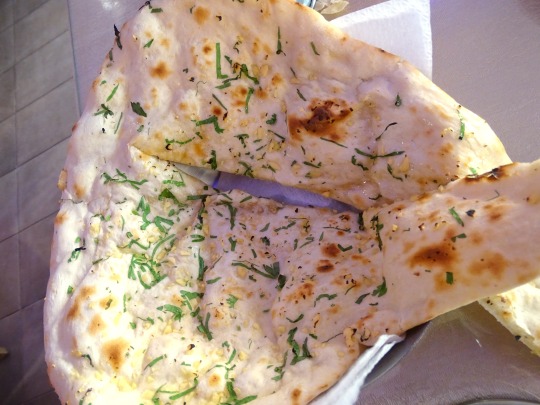





Garlic Lovers Day
Garlic Lovers Day is dedicated to lovers of garlic. Garlic is an onionlike plant that is highly aromatic and has a distinct flavor. It is native to Central Asia and Northeastern Iran, and has long been used as a seasoning and for medicine in Asia, Africa, and in Europe around the Mediterranean Sea. It was used in ancient China, Rome, and Greece, and in the Americas wild garlic was eaten before Europeans arrived. In the United States it was only popular near the Gulf of Mexico and in ethnic neighborhoods in large cities, until the mid-20th century, when its popularity spread.
Garlic is used on breads, and infused in oils that season vegetables, meats, and pastas. It is also used in making things such as bruschetta and pesto. It was used to treat gangrene during World War I and II, and studies have been done to see how it affects cardiovascular health, cancer, and the common cold, but results have been inconclusive. Most garlic is grown overseas, and 90% of the domestic crop is grown in California. There are many types of garlic, most of which are varieties of hardneck or softneck garlic.
How to Observe Garlic Lovers Day
Celebrate the day by making a recipe that includes garlic, or picking up a garlic cookbook. You could also make some garlic infused olive oil. In many areas this is also a good time of year to plant garlic, as it should be done before the fall frost.
Source
#garlic and herb naan#Garlic Fries#Deep Fried Garlic and Beef#food#USA#Spain#restaurant#Farfalle with Chicken and Roasted Garlic#chicken breast#garlic potatoes#Germany#Steakpfanne#garlic bread#Garlic Shrimps#National Garlic Day#NationalGarlicDay#6 October#Portugal#Beef a Casa#Filet Port#original photography#travel#vacation
4 notes
·
View notes
Text
Recipe for Aromatic House Warming Cider
Making the perfect Aromatic House Warming Cider should only take approximately 50 min . It’s considered an Easy level recipe. Below are the ingredients and directions for you to easily follow.
There are many different ways to make this Aromatic House Warming Cider recipe. Once you’re familiar with our recommended ingredients and directions, you can add your own twist to this recipe to make it your own! We’ve also listed potential Cookware items below that might be necessary for this Aromatic House Warming Cider recipe.
Aromatic House Warming Cider Popular Ingredients
2 quarts apple cider
2 teaspoons pumpkin pie spice
2 cinnamon sticks
1 (2-inch) piece ginger
1 (12-ounce) bag fresh cranberries or 1 cup dried cranberries
1 orange, zested
Steps for making Aromatic House Warming Cider
Combine all of ingredients in a large pot and bring to a boil over medium heat. Once the mixture is boiling, turn heat down to low and bring to a gentle simmer. The cider will permeate the house with a warm and inviting holiday scent. Add more apple cider as needed when the cider evaporates.
This recipe can also be reduced by half and prepared in a fondue pot so that it can be placed in a room other than the kitchen.
Popular Categories for this Recipe
Apple Recipes
Fruit – In botany, a fruit is the seed-bearing structure in flowering plants that is formed from the ovary after flowering.Fruits are the means by which flowering plants (also known as angiosperms) disseminate their seeds. Edible fruits in particular have long propagated using the movements of humans and animals in a symbiotic relationship that is the means for seed dispersal for the one group and nutrition for the other; in fact, humans and many animals have become dependent on fruits as a source of food. Consequently, fruits account for a substantial fraction of the world’s agricultural output, and some (such as the apple and the pomegranate) have acquired extensive cultural and symbolic meanings.In common language usage, “fruit” normally means the fleshy seed-associated structures (or produce) of plants that typically are sweet or sour and edible in the raw state, such as apples, bananas, grapes, lemons, oranges, and strawberries. In botanical usage, the term “fruit” also includes many structures that are not commonly called “fruits”, such as nuts, bean pods, corn kernels, tomatoes, and wheat grains.
Pumpkin – A pumpkin is a cultivar of winter squash that is round with smooth, slightly ribbed skin, and is most often deep yellow to orange in coloration. The thick shell contains the seeds and pulp. The name is most commonly used for cultivars of Cucurbita pepo, but some cultivars of Cucurbita maxima, C. argyrosperma, and C. moschata with similar appearance are also sometimes called “pumpkins”.Native to North America (northeastern Mexico and the southern United States), pumpkins are one of the oldest domesticated plants, having been used as early as 7,000 to 5,500 BC. Pumpkins are widely grown for commercial use and as food, aesthetics, and recreational purposes. Pumpkin pie, for instance, is a traditional part of Thanksgiving meals in Canada and the United States, and pumpkins are frequently carved as jack-o’-lanterns for decoration around Halloween, although commercially canned pumpkin purée and pumpkin pie fillings are usually made from varieties of winter squash different from the ones used for jack-o’-lanterns. In 2019, China accounted for 37% of the world’s production of pumpkins.
Gluten Free – A gluten-free diet (GFD) is a nutritional plan that strictly excludes gluten, which is a mixture of proteins found in wheat (and all of its species and hybrids, such as spelt, kamut, and triticale), as well as barley, rye, and oats. The inclusion of oats in a gluten-free diet remains controversial, and may depend on the oat cultivar and the frequent cross-contamination with other gluten-containing cereals.Gluten may cause both gastrointestinal and systemic symptoms for those with gluten-related disorders, including coeliac disease (CD), non-coeliac gluten sensitivity (NCGS), gluten ataxia, dermatitis herpetiformis (DH), and wheat allergy. In these people, the gluten-free diet is demonstrated as an effective treatment, but several studies show that about 79% of the people with coeliac disease have an incomplete recovery of the small bowel, despite a strict gluten-free diet. This is mainly caused by inadvertent ingestion of gluten. People with a poor understanding of a gluten-free diet often believe that they are strictly following the diet, but are making regular errors.In addition, a gluten-free diet may, in at least some cases, improve gastrointestinal or systemic symptoms in diseases like irritable bowel syndrome, rheumatoid arthritis, or HIV enteropathy, among others. There is no good evidence that gluten-free diets are an alternative medical treatment for people with autism.Gluten proteins have low nutritional and biological value and the grains that contain gluten are not essential in the human diet. However, an unbalanced selection of food and an incorrect choice of gluten-free replacement products may lead to nutritional deficiencies. Replacing flour from wheat or other gluten-containing cereals with gluten-free flours in commercial products may lead to a lower intake of important nutrients, such as iron and B vitamins. Some gluten-free commercial replacement products are not enriched or fortified as their gluten-containing counterparts, and often have greater lipid/carbohydrate content. Children especially often over-consume these products, such as snacks and biscuits. Nutritional complications can be prevented by a correct dietary education.A gluten-free diet may be based on gluten-free foods, such as meat, fish, eggs, milk and dairy products, legumes, nuts, fruits, vegetables, potatoes, rice, and corn. Gluten-free processed foods may be used. Pseudocereals (quinoa, amaranth, and buckwheat) and some minor cereals are alternative choices.
High Fiber
Low-Fat
Low Sodium
Vegan – Veganism is the practice of abstaining from the use of animal products, particularly in diet, and an associated philosophy that rejects the commodity status of animals. An individual who follows the diet or philosophy is known as a vegan. Distinctions may be made between several categories of veganism. Dietary vegans, also known as “strict vegetarians”, refrain from consuming meat, eggs, dairy products, and any other animal-derived substances. An ethical vegan is someone who not only follows a plant-based diet but extends the philosophy into other areas of their lives, opposes the use of animals for any purpose, and tries to avoid any cruelty and exploitation of all animals including humans. Another term is “environmental veganism”, which refers to the avoidance of animal products on the premise that the industrial farming of animals is environmentally damaging and unsustainable.Well-planned vegan diets are regarded as appropriate for all stages of life, including infancy and pregnancy, by the American Academy of Nutrition and Dietetics, the Australian National Health and Medical Research Council, the British Dietetic Association, Dietitians of Canada, and the New Zealand Ministry of Health. The German Society for Nutrition—which is a non-profit organisation and not an official health agency—does not recommend vegan diets for children or adolescents, or during pregnancy and breastfeeding. There is inconsistent evidence for vegan diets providing a protective effect against metabolic syndrome, but some evidence suggests that a vegan diet can help with weight loss, especially in the short term. Vegan diets tend to be higher in dietary fiber, magnesium, folic acid, vitamin C, vitamin E, iron, and phytochemicals, and lower in dietary energy, saturated fat, cholesterol, omega-3 fatty acid, vitamin D, calcium, zinc, and vitamin B12. A poorly-planned vegan diet may lead to nutritional deficiencies that nullify any beneficial effects and may cause serious health issues, some of which can only be prevented with fortified foods or dietary supplements. Vitamin B12 supplementation is important because its deficiency can cause blood disorders and potentially irreversible neurological damage; this danger is also one of the most common in poorly-planned non-vegan diets.The word ‘vegan’ was coined by Donald Watson and his then-future wife Dorothy Morgan in 1944. It was derived from ‘Allvega’ and ‘Allvegan’ which had been used and suggested beforehand by original members and future officers of the society George A. Henderson and his wife Fay, the latter of whom wrote the first vegan recipe book. At first, they used it to mean “non-dairy vegetarian”, however, by May 1945, vegans explicitly abstained from “eggs, honey; and animals’ milk, butter and cheese”. From 1951, the Society defined it as “the doctrine that man should live without exploiting animals”. Interest in veganism increased significantly in the 2010s, especially in the latter half, with more vegan stores opening and more vegan options becoming increasingly available in supermarkets and restaurants worldwide.
You might need the following Cookware
In this section we’ve listed Cookware items that might be helpful to make this Aromatic House Warming Cider recipe (or similar recipes). If certain tools or utensils are not applicable, then ignore and choose relevant items.
Cooking pots
Frying pan
Steamers
Colander
Skillet
Knives
Cutting board
Grater
Saucepan
Stockpot
Spatula
Tongs
Measuring cups
Wooden Spoon
from Crabbie Recipes https://underspicycrab.com/general-recipes/aromatic-house-warming-cider-recipe/
0 notes
Text
Silks Through the Silk Road
by Kishore
The Silk Road earned its name from Chinese silk, as it is a highly demanded commodity that merchants transported along these trade routes. The increased political stability and advances in technology caused an increase in these trades.
Silk Road is an ancient and historically important trade route, through which carpets and other textiles from various parts of Asia have been traded. It promoted commerce and travel between India, China, Central Asia and Europe, and fostered cultural interaction. By the 15th century, the Western world was interested in Oriental carpets made in major carpet-weaving centers in Turkey and exported them to Europe and then to America.

Carpet with Palm Trees, Ibexes, and Birds
late 16th–early 17th century
Silk was considered to be one of the most luxurious commodities traded along the many routes of the Silk Road. But Silk was not the only one traded and silks were not the most important of all exchange goods.
Since the 19th century, archaeologists have discovered textile fragments which were made of fibers such as cotton and wool from places around the Taklamakan Desert in Central Asia.
Even though silk was indeed highly demanded and frequently traded ware that lends the Silk Road its name, clothing and fabrics that are made from other materials were also exchanged along these routes and established a part of the broader network of cross-cultural interactions which took place within the field of textile production and design.
“To follow the Silk Road is to follow a ghost. It flows through the heart of Asia, but it has officially vanished leaving behind the pattern of its restlessness: counterfeit borders, and unmapped peoples. The road forks and wanders wherever you are. It is not a single way, but many: a web of choices.”
- Colin Thubron
Types of wool traded through the Silk Road:
Felted wool: It was said to be used in making clothes and furnishing, such as carpets, saddle blankets and hats for both aesthetic and functional purposes.
Woven wool: Generally woven fabrics were stronger and thicker than non-woven fabrics. These were used in making sweaters, curtains etc.
Trade of Indian textiles through the Silk Route:
Spices and textiles were the principal commodities in the International commerce of the pre-industrial era. India is particularly known for the quality of its textiles. In 1600 the British East India Company received its charter, and two years later the Dutch East India Company was also founded. These agencies purchased textiles in India for gold and silver, exchanged them for the spices grown in Malay Islands, and sold these spices in Europe and Asia. Soon the Indian textiles were exported directly to Europe, where they had become highly popular. Some of the Indian textiles even got their names translated into English: Calico, Pajama, Gingham, Dungaree, Chintz, and khaki.

Man's Robe (Jama) with Poppies
Production of Indian textiles:
Fabrics: Wool, cotton, and silk are the three materials from which textiles are woven. Cotton plants are grown in many regions of India, where black soil availability is higher. Wild silk moths are the source of silk, which is mostly found in the central and northeastern parts of the country. The fleece of mountain goats and sheep raised in cold regions like Kashmir, Ladakh, and the Himalayas- is spun into wool.
Dyes: Being obtained from the plants and minerals native to the subcontinent, dyes are mostly available in red, blue, violet, green, yellow, and black. The blue shades were obtained from the Indigo plants which are processed and traded in the form of dried cakes. The yellow color is obtained from turmeric and black is made by mixing indigo with an acid substance such as tannin. Purple and green are made by layering yellow dyes over blue cloth.
Printing, resist dyeing, and painting: Mordant is a metallic acid, which is used as a fixative agent to combine with dye and bond onto the fiber. These mordants are also used to create patterns. Resist dyeing, also known as Batik by the Malay term.
Kalamkari: Literally it means “pen-worked”, this is a multi-step process for creating designs. At first, the cloth is stiffened by being steeped in buffalo milk and astringents and then it is dried in the sun. The black, red, brown and violet portions of the designs are outlined using a mordant, and the cloth is placed in a bath of alizarin. After that, the cloth is covered with wax, except for the parts which are to be dyed blue, and is placed in an indigo bath. Then, the wax is scraped off and the areas to be yellow or light colors are painted by hand.
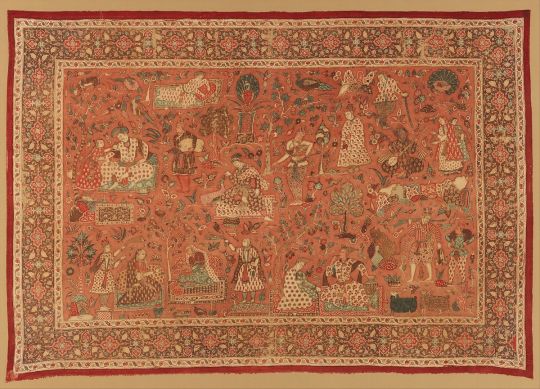
Kalamkari Rumal
ca. 1640–50

Kalamkari Hanging with Figures in an architectural setting
ca. 1640–50
Weaving and Embroidery: Different patterns can be created in the process of weaving, mostly with silks. The weft threads are woven onto the loom, they combine with the warp and make patterns of extraordinary density and complexity. Another speciality of India is embroidery, in which a decorative needlework pattern is sewn onto the fabric.
Indo-China Trade:
The two Asian giants, India and China, share vast similarities in terms of history and culture. Both countries represent their unique history and old-age civilizations. The Silk Route, which is the earliest network of trade routes, served as a connection between India and China. Buddhism also spread to China and East Asia from India, through these routes. The routes were more than just trade routes, it was the carrier of innovations, inventions, discoveries, ideas and myths.
0 notes